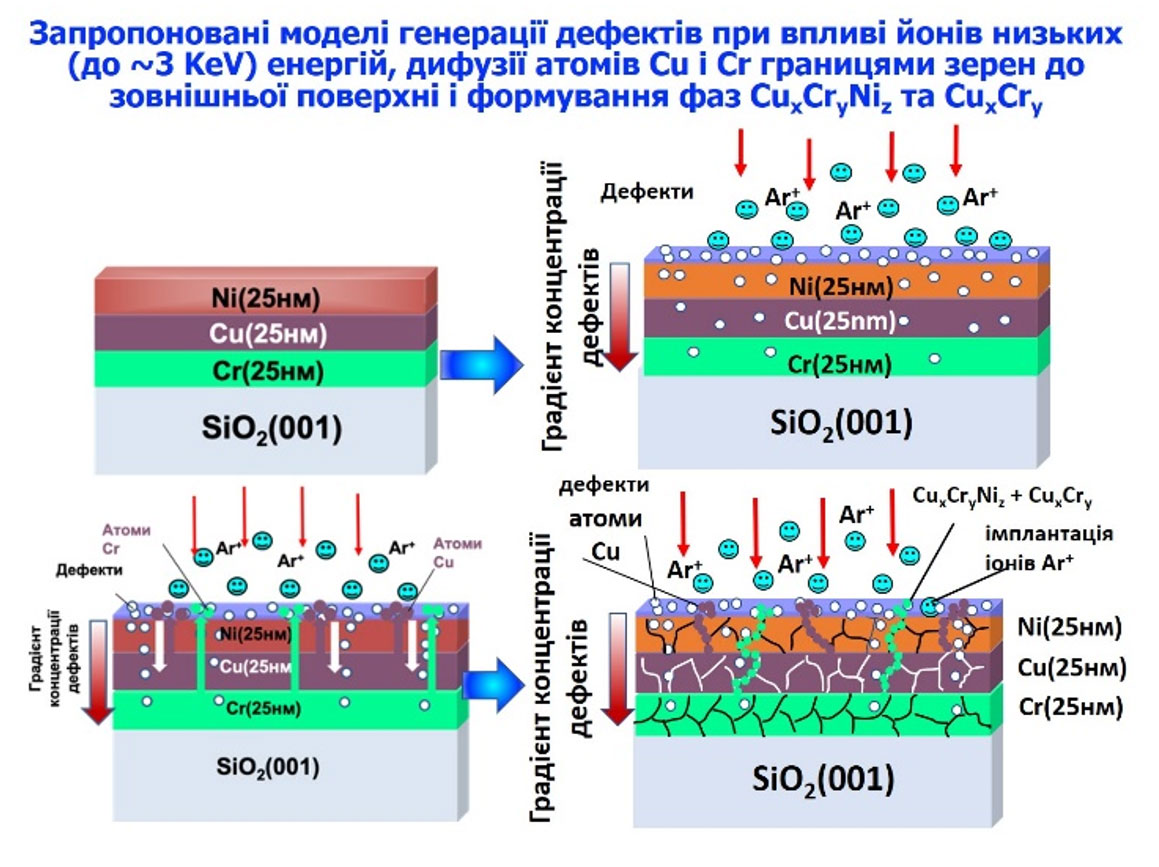Influence of ion irradiation on structure, absorption capacity and corrosion properties of nanosized metal compositions
It is shown that the method of bombardment of a nanothick vacuum-condensed metallic substance with low-energy ions is a promising tool for the purposeful formation of such gradient distributions of structural-phase states that provide new properties. New methodological approaches have been developed in the structural analysis of nanoscale materials using synchrotron radiation (with a photon flux density by 12 orders of magnitude, and an exposure duration 150 times shorter than provided by traditional methods of X-ray structural analysis). The passivating effect of low-energy (up to 2000 eV) ion irradiation of the surface of thin-film (up to 100 nm thick) systems on the materials of metal layers is shown, which promotes the reduction of oxides at internal interfaces, reduces the number of carbon impurity atoms, and increases the crystallinity degree of the conductive layer while maintaining the initial phase composition. A new model of reduction processes in nanoscale film systems based on the long-range effect of bombarding ions is proposed, which explains the removal of impurities from grain boundaries and interfaces between components, thickening of layers and improvement of corrosion properties due to the "reinforcement" of the surface layer by argon. It has been demonstrated for the first time that the combination of low-energy ion treatment using the optimal mode (E ~ 800 eV, t ~ 20 minutes) with thermal annealing (in the range of 200°C - 450°C) allows to maintain the positive effects of ion action and additionally increases the crystal structure perfection degree of the material of conductive layer, stabilizes the nanocrystalline structure by inhibition of recrystallization processes, slows down the diffusion interaction of components, significantly increases the physical, mechanical and adhesive properties and thereby increases the thermal stability of the film material. The regularities related to the physical nature of the dependence of the probability of sputtered atoms ionization on the atomic and electronic structure of metals, dilute solid solutions, and concentrated alloys exposed to bombardment with ions of neutral gases (matrix effect) have been determined.

| Attachment | Size |
|---|---|
| 808.42 KB |




